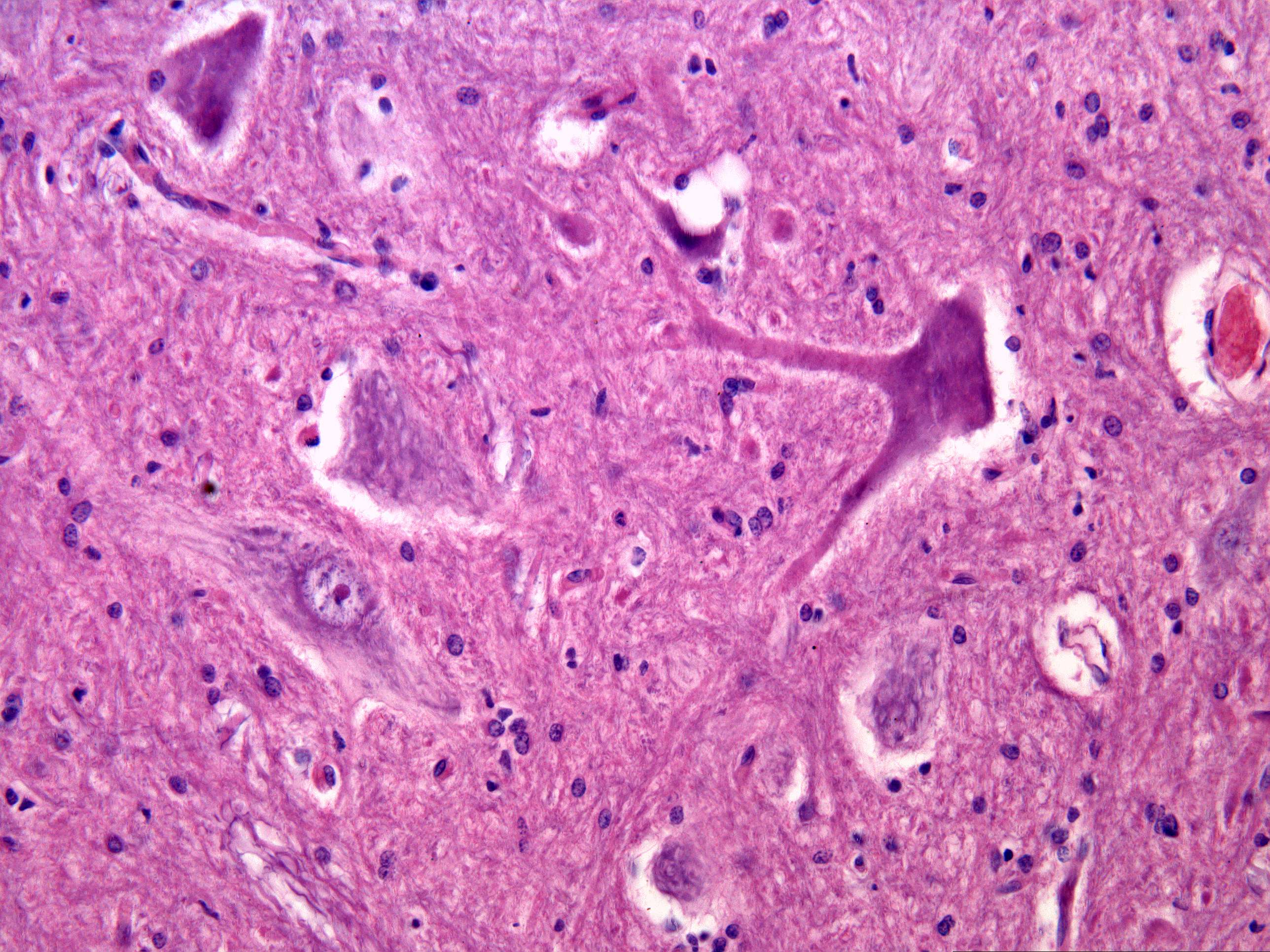Motor neurons (400X)
The motor neurons in the spinal cord are a crucial component of the central nervous system responsible for transmitting signals to muscles and glands, enabling movement and bodily function. Histologically, these neurons are large with distinct characteristics: their cell bodies, or soma, are found in the anterior (ventral) horn of the spinal cord gray matter. Their prominent feature is a long axon that extends from the soma, often covered in a myelin sheath formed by supporting cells called oligodendrocytes. These neurons exhibit a diverse array of shapes and sizes, reflecting their role in controlling various muscles throughout the body. The organization and structure of motor neurons in the spinal cord are essential for the coordination and execution of voluntary and involuntary movements.


